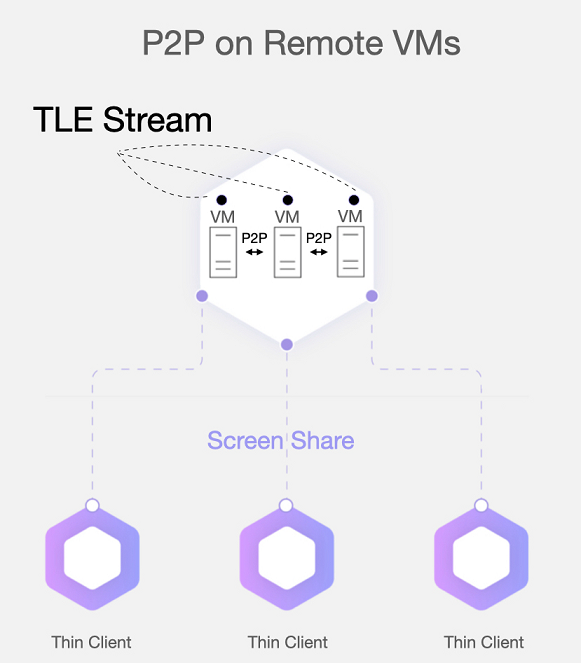Note
Access to this page requires authorization. You can try signing in or changing directories.
Access to this page requires authorization. You can try changing directories.
Microsoft eCDN supports Citrix (Citrix Workspace), VMware (VMware Horizon), and AVD (Microsoft Azure Virtual Desktop).
Overview
Virtual Desktop Infrastructure (VDI) is a technology that refers to the use of virtual machines (VM) to provide and manage virtual desktops. A VDI hosts desktop environments on a centralized server infrastructure and facilitates remote connections to them for end-users on request. With VDI, employees use a "thin-client" to connect to a secure remote VM hosted on-premises or in the cloud.
P2P on remote VMs
With Microsoft eCDN enabled, VMs peer with each other and reduce the amount of bandwidth needed from the Internet (HTTP traffic from the video CDN). This solution is valuable when customers use on-premises VMs, however this load-sharing solution could be beneficial in cloud hosted VDI solutions as well.

Client-side peering
At this time, client-side peering, where peering works directly between thin clients, is not a supported scenario.
Important
As such, regardless of whether or not Microsoft Teams is VDI-optimized or browsers have Multimedia Redirection technology enabled, P2P for the TLE or Town Hall streams will be between VMs.
Analytics
In the eCDN Analytics Dashboard, users with nonoptimized VDI environments are identified with their corresponding VDI tech (Citrix, VMware, AVD). This identification appears in the OS field of the breakdown analytics.
